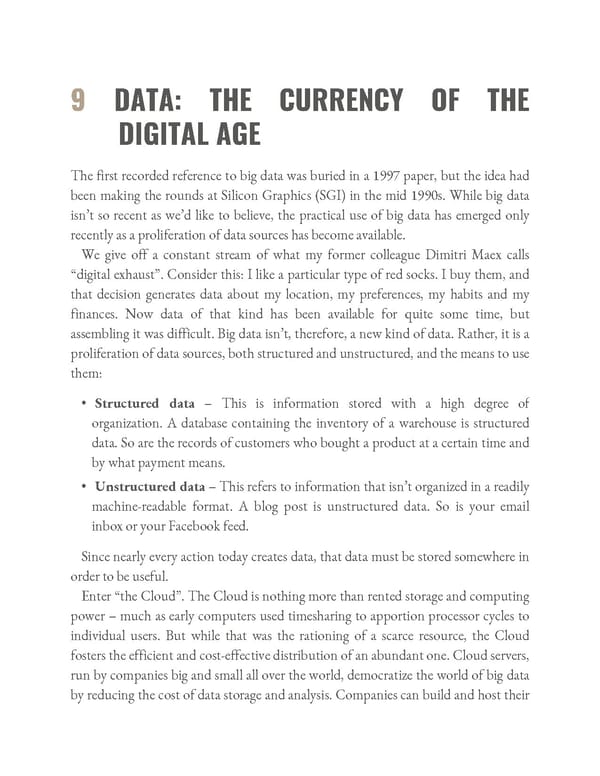9 DATA: THE CURRENCY OF THE DIGITAL AGE The first recorded reference to big data was buried in a 1997 paper, but the idea had been making the rounds at Silicon Graphics (SGI) in the mid 1990s. While big data isn’t so recent as we’d like to believe, the practical use of big data has emerged only recently as a proliferation of data sources has become available. We give off a constant stream of what my former colleague Dimitri Maex calls “digital exhaust”. Consider this: I like a particular type of red socks. I buy them, and that decision generates data about my location, my preferences, my habits and my finances. Now data of that kind has been available for quite some time, but assembling it was difficult. Big data isn’t, therefore, a new kind of data. Rather, it is a proliferation of data sources, both structured and unstructured, and the means to use them: • Structured data – This is information stored with a high degree of organization. A database containing the inventory of a warehouse is structured data. So are the records of customers who bought a product at a certain time and by what payment means. • Unstructured data – This refers to information that isn’t organized in a readily machine-readable format. A blog post is unstructured data. So is your email inbox or your Facebook feed. Since nearly every action today creates data, that data must be stored somewhere in order to be useful. Enter “the Cloud”. The Cloud is nothing more than rented storage and computing power – much as early computers used timesharing to apportion processor cycles to individual users. But while that was the rationing of a scarce resource, the Cloud fosters the efficient and cost-effective distribution of an abundant one. Cloud servers, run by companies big and small all over the world, democratize the world of big data by reducing the cost of data storage and analysis. Companies can build and host their
 Ogilvy on Advertising in the Digital Age Page 213 Page 215
Ogilvy on Advertising in the Digital Age Page 213 Page 215